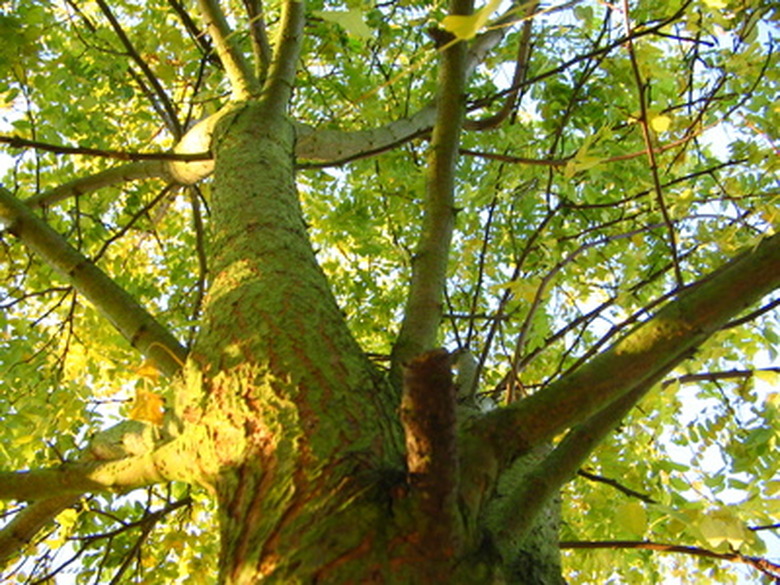What Are Wisconsin Invasive Plants With Thorns?
The Wisconsin State Herbarium and Department of Natural Resources maintains a growing list of invasive plant species that includes detailed descriptions and locations of harmful plants found throughout the state. There are about 37 plants on Wisconsin's invasive plant species list, but only four of these most serious invaders have thorns.
Multiflora Rose (Rosa multiflora)
The multiflora rose is an invasive exotic plant found in open woods and grasslands in southern Wisconsin that was first planted in the state to control soil erosion. This plant forms dense tangles of stems that bear sharp thorns, making it tough to control. Established both by bird-carried seeds and vegetative spreading, the multiflora rose has white, star-shaped flowers and orange-red berry-like fruits. The multiflora rose grows in a clumping, bush-like manner, with compound leaves comprised of usually seven oval-shaped leaflets. The tall, arching stems are covered with stout, pointed thorns.
- The Wisconsin State Herbarium and Department of Natural Resources maintains a growing list of invasive plant species that includes detailed descriptions and locations of harmful plants found throughout the state.
- This plant forms dense tangles of stems that bear sharp thorns, making it tough to control.
Autumn Olive (Elaeagnus umbellata)
The autumn olive is an invasive tree found invading disturbed sites in southern Wisconsin that was first brought to the state as an ornamental tree. The autumn olive has twigs and undersides of leaves that are covered with silvery scales, as well as twigs with long, thin thorns. This invasive tree has simple leaves with smooth edges that grow in an alternately arranged fashion along the branches. The autumn olive blooms in early summer with yellowish, elongated flowers and bears clustered, berry-like red fruits. The Russian olive (Elaeagnus angustifolia) is very similar to the autumn olive, but it often doesn't have thorns on the twigs. Another distinguishing characteristic is that the Russian olive tree produces silvery, dry fruits instead of red, juicy berries.
Japanese Barberry (Berberis thunbergii)
The Japanese barberry is a thorny, invasive shrub that grows in forests, fields and abandoned pastures throughout most of Wisconsin. Native to Asia, the Japanese barberry was first introduced to Wisconsin as an ornamental shrub. The Japanese barberry grows up to about 3 ½ feet tall and has sharp, stiff thorns, up to 1/3-inch long, growing beside its buds. Its whitish to pale-yellow flowers have six petals and bloom in May, followed by elongated red berries that stay on the branches until November. The Japanese barberry has simple, spatula-shaped leaves that are alternately arranged along the branches and clustered in pairs or groups of up to six leaves right above each thorn.
- The autumn olive is an invasive tree found invading disturbed sites in southern Wisconsin that was first brought to the state as an ornamental tree.
- The Japanese barberry grows up to about 3 ½ feet tall and has sharp, stiff thorns, up to 1/3-inch long, growing beside its buds.
Black Locust (Robinia pseudoacacia)
The black locust is an invasive tree that is found in southern Wisconsin but also on disturbed sites in the northern part of the state. The black locust has pairs of stout thorns at each leaf bud and compound leaves comprised of 15 leaflets. The black locust blooms during spring and summer in small white, fragrant flowers, followed by brownish-purple seed pods.
